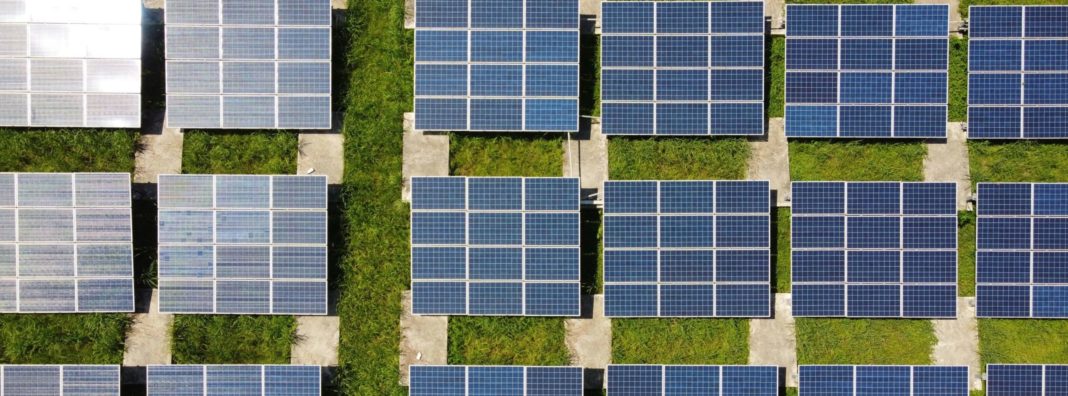
If you have spent much time following the shifting landscape of energy production in this country, you are likely already aware that solar-powered electricity generation is a fast-growing industry. And if you were unaware up to this point of solar’s growing popularity among energy producers, well, now you know: solar is going to shift the way we produce electricity in a big way. In some ways, it already has.
According to the US Energy Information Administration’s (EIA) inventory of electricity generators, solar photovoltaics (solar PV) are expected to make up 40 percent of new electricity generating capacity added to the grid this year. That means that two out of every five electrons produced at a new power plant this year could come from solar power.
That is great news for the solar industry! And yet, if you dig a little deeper, you’ll see battles playing out across the country between utility companies and rooftop solar advocates. At the heart of these disagreements lie policies referred to as net metering, or net energy metering. These policies are intended to prevent utilities from taking advantage of rooftop solar owners by ensuring that they are compensated for the energy they produce. But in many states, the protections are so strong that they actually allow rooftop solar owners to take advantage of utilities and their non-solar customers.
New technologies, new challenges
Rooftop solar installations are a unique form of energy production. Where most electricity is generated at a power plant or electric generating unit (EGU), solar is the only commonly used technology that allows customers to create large amounts of their own electricity. If these rooftop solar owners ever produce more electricity at a given time than they are using, that electricity is fed back into the grid. Without net metering regulation, utilities could then sell that electricity to other customers attached to the grid and profit from it. Net metering solves this by requiring utilities to pay rooftop solar owners a set price for the excess energy they produce.
This sounds like a fair and reasonable solution, so what’s with all the fuss? It has to do with a mismatch between the price utilities normally pay for electricity and the price some net metering policies require them to pay. Utilities act as an electricity distributor. They estimate how much energy their customers will need, buy that electricity from EGUs, and transport it to their customers via the power grid. And like any distributor, the price they charge you for the electricity you use is higher than the price they pay to produce it. The difference between the two is meant to account for maintenance of power lines, investment in new equipment, operating costs for the utility, etc.
Think of it in terms of an iPhone. The parts used in an iPhone 11 Pro Max cost around $500, but when it hit US stores it cost somewhere between $1,099 and $1,449. The additional price factors in things like labor, research and development, marketing, machines and factories used in production, the cost to ship from China, etc. It’s the reason stores like Sam’s Club and Costco are so popular: it is cheaper to sell goods in bulk and with minimal packing.
The issue with many net metering policies is that they require utilities to pay rooftop solar owners above wholesale prices. Some even require utilities to pay retail rates. It’s akin to going to Apple and telling them that in addition to the phones they’re making in China, they also have to buy phones from any 3rd party manufacturer that makes them. Oh, and they have to pay $1,449 for each one, not the $500 they cost to make. That is a great deal for the 3rd party manufacturers, but suddenly iPhones just got a lot more expensive for everyone else. The same goes for solar energy.
The price you pay for your neighbor’s solar
When net metering policies were initially instituted, the above-wholesale price made more sense. Solar technology was still really expensive, and there wasn’t a lot of it. Artificially increasing the value of solar-generated electricity gave it a helping hand to overcome that price premium. Net metering drove demand among early adopters. As you can see in Figure 1, rooftop solar installations — the residential and non-residential categories — accounted for the majority of solar installations up until 2013. Since then, however, these installations have been outpaced by the addition of utility-scale solar arrays. In fact, the EIA expects that there will be four times more utility-scale solar installed this year than residential solar.
One of the underappreciated facts about the changes in electricity markets over the last ten years is just how much solar technologies have improved. From just 2013 to 2018, solar construction costs fell by about 50 percent. In fact, Lazard’s levelized cost of energy (LCOE) now ranks utility-scale solar as slightly cheaper than both coal and natural gas. Solar technologies are now competitive with fossil fuel generation, even without government support.
These numbers also clarify that, although utility-scale solar technologies have reached cost parity with fossil fuels, rooftop solar is much more expensive. For rooftop solar, the midpoint cost estimate is about 20 cents per kWh. Utility-scale solar is about 4 cents per kWh — a five-fold difference.
When policies pay residential solar owners at the retail rate for what they generate, it shifts some if not all of the cost difference onto those without solar panels on their homes. This cost-shift, sometimes called a cross-subsidy, results in higher rates for everyone, and non-solar customers end up paying to subsidize those with rooftop solar. In paying rooftop solar owners the retail rate, as net metering does, rooftop solar owners are compensated for value that they do not provide to the electrical grid.
California has had a net metering rule in place for 25 years, but recent realizations about the cost and benefit imbalances of the policy are pushing them to re-evaluate. The California Public Utility Commission released a report earlier this year that found that the state net metering rule cost California ratepayers $12 billion above and beyond the benefits they received from the policy. These costs are borne more heavily by non-solar owners, who tend to be younger and poorer than households with rooftop solar installations. In addition, electricity consumption only somewhat tracks income increases. When income goes up, electricity use doesn’t increase proportionally, meaning poorer households spend a larger portion of their income on electricity consumption.
In October of 2020, Utah’s Public Service Commission decided to update its rooftop solar payment system. The commission recently decided to set the credit for exported rooftop solar at a little less than 6 cents per kilowatt-hour. This reflects the cost of electricity that the utility company would have had to pay plus a little bit more for other services that rooftop solar provides to the utility. Those other services are things like not needing to build additional transmission lines.
Vermont took a similar approach to Utah. In a November 2020 order from the state’s Public Utility Commission (PUC), the commission decided to reduce the payment to rooftop solar owners by three cents. Although the PUC also approved a rate increase of one-cent per kWh, the net effect is only a two-cent reduction. In the order, Vermont’s PUC pointed out that large-scale solar facilities receive around 9 cents per kWh. In stark contrast, rooftop solar owners are paid 17.4 cents per kWh. Those costs, the order says, are passed on to other customers. One utility in the state estimated that it would shift $47.4 million in costs from rooftop solar owners onto non-solar households over the next 25 years. The PUC’s order concludes,
“Without the decreases to incentives announced today, the cost of new net-metered power also would have increased, shifting even more costs to ratepayers who do not net-meter and further increasing statewide electric rates.”
A roadmap for reform
The emergence of rooftop solar is a fundamental change to the world of electricity, and public service commissions across the country should be making fundamental shifts in how they operate in response. Rather than charging per-kWh, electricity rates should reflect more about the time and place that you and I need electricity. These reforms would reduce the regressive burden net metering policies currently place on non-solar owners and ensure that the most efficient and effective forms of solar energy production are utilized. Sometimes that means installing rooftop solar, but more often than not it means shifting production to utility-scale solar farms.
A 2018 National Bureau of Economic Research working paper estimated there are 1.4 million solar arrays in the US that neither maximize the value of rooftop solar energy production nor offset the damages from fossil fuel production. If these inefficient systems had been installed in regions where they provided the most value, such as the midwest, it would have resulted in a $1 billion increase in environmental benefits above what solar provides today. There’s a lot of value in residential energy production in many locations. But our current system doesn’t encourage that kind of installation. We incentivize installing rooftop solar everywhere all the time when we should incentivize installations according to their value in time and place. In short, we should set up a system that rewards installations that meet the needs of all electricity consumers.
The reforms to compensating rooftop solar in Utah took several years. In other states, the debate will continue for years to come. Here’s a roadmap for public utility commissions interested in creating the environment for efficient rooftop solar installations to join:
- Adopt rooftop solar compensation policies that are as close as possible to real-time locational pricing.
- Adopt retail electricity rates that reflect real-time locational pricing.
- Recover fixed costs with fixed charges.
- Index, rebate, or otherwise reduce the fixed charges for income-qualifying households to avoid increasing electricity costs for low-income families.
Utah’s change to variable rooftop solar policies is a good first step towards these reforms. Rooftop solar producers are paid more in the summer when demand for electricity is higher. But these should be finer cuts. The best system for compensation would be tied to real-time needs and location. And the maintenance costs would be recovered with fixed charges that account for income differences.
The goal of net metering policy was to protect rooftop solar owners from being taken advantage of by utilities and to incentivize the adoption of solar power. Now that solar energy is cost-competitive with fossil fuels, these policies should be revisited. The benefit they once provided is now becoming a hindrance to further solar deployment and provision of affordable energy. Supporting solar installations where it is most valuable, and compensating rooftop solar owners according to that value, ensures the best path forward for solar energy.


